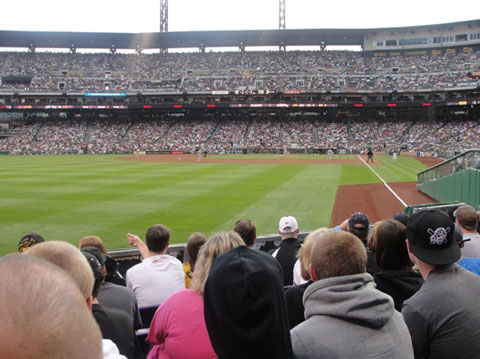
Vol. XVIII, No. 6, July 2018
What do attendees at sports and live events really want?
An increasing challenge for every type of out-of-home consumer business, including all forms of out-of-home leisure experiences, is that people are staying home more often rather than going out. This is true for sports with attendance at sports stadiums declining. A YouGov August 2017 survey found that 59% of all Americans prefer to watch games on TV rather than be there live (32%). Millennials are even less likely with 46% preferring the sofa. The survey found that one-third of Americans have never bought a sports ticket.

To learn how to increase the appeal of the sports venues they design for clients, Populous, a sports and live venue architectural firm, commissioned a study of what fans want when they go to sports games or events in 'stick and ball sports' and eSports. Not only do the survey findings give insight into how to better design sports and live event venues, but we believe many of the findings are just as applicable to entertainment-oriented community leisure venues (CLVs).
Basically, what the survey found is that the game or live event is only a part of the visit equation and at times nothing more than a mere backdrop to time spent with friends and families. Yes, it's all about the social experience, typically more than about viewing the game.
One in three of surveyed fans think that the future of entertainment will be found in the virtual world, but two of three would still rather experience a concert or sporting event in person. Two in three fans said they wanted a unique live experience and said they are willing to pay extra for it.
Ernest Joyer, an associate with the Perkins+Will architectural firm, says that having a great view of the action is no longer the most important selling point for a live event venue. “Some ticket holders today are more interested in socializing in a great environment,” Joyner says. “Despite all the emphasis on technology, we still see venues primarily as a place where people come together in physical space and interact face-to-face. . . Often times, groups are mixed, with some members very interested in the action, and some not so much. We try to make spaces where the group can still be a group, and those who want to watch can still watch, and those that want to talk in a corner can do that too.”
When it comes to the way Populous will design venues going forward, Brian Mirakian, senior principal at the firm says, “Less seats and more social experiences are going to be the new normal. Viewing the action is just going to be part of the in-venue experience. This is a fundamental shift.”
Although some of the design considerations for CLVs are different than for stadiums and live event venues, the same can be said for entertainment-oriented CLVs. Although the entertainment is more engaging as it is participatory rather than just passive viewing, it is still typically only the backdrop for the face-to-face social experience. In fact, the social experience combined with great food and beverage is typically the more important selling point. When we examine the highly successful New School CLV models that are making the older FEC models obsolete, especially the new eatertainment models, the entertainment is no longer the majority of the revenues. It's the social atmosphere and the food and drink that is driving both the attendance and the spending.


